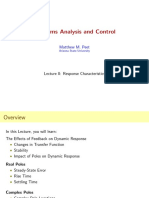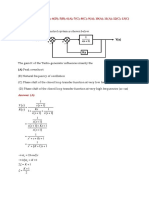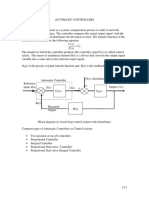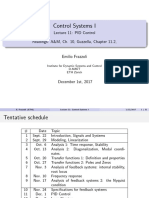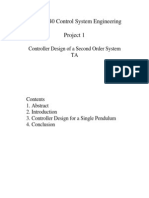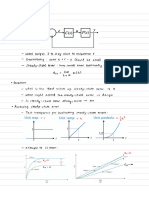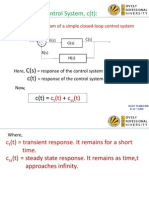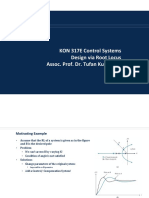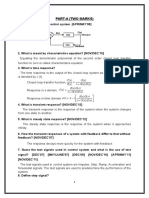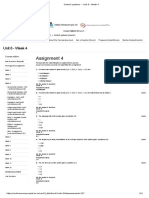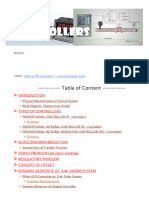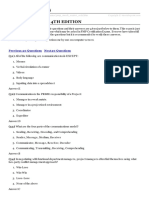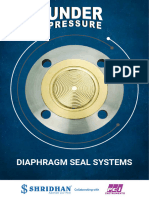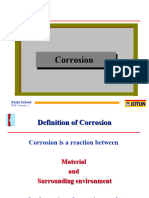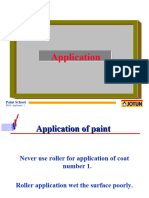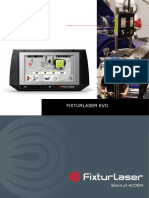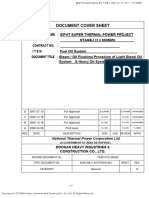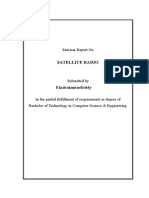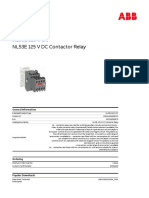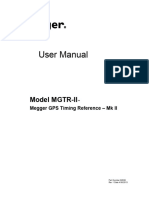0% found this document useful (0 votes)
67 views32 pages443 Lecture 11
This lecture discusses different types of control, including proportional, derivative, and proportional-derivative (PD) control. Derivative control aims to improve performance by reacting to the rate of change of error, but it is prone to instability and noise amplification when implemented using delays or approximations. PD control combines proportional and derivative control to improve stability while reducing steady-state error and noise effects. For a second-order system, PD feedback allows complete control over the system poles, enabling any desired closed-loop performance. An example demonstrates designing PD control to meet performance specifications for a second-order plant.
Uploaded by
islamfarag2Copyright
© © All Rights Reserved
We take content rights seriously. If you suspect this is your content, claim it here.
Available Formats
Download as PDF, TXT or read online on Scribd
0% found this document useful (0 votes)
67 views32 pages443 Lecture 11
This lecture discusses different types of control, including proportional, derivative, and proportional-derivative (PD) control. Derivative control aims to improve performance by reacting to the rate of change of error, but it is prone to instability and noise amplification when implemented using delays or approximations. PD control combines proportional and derivative control to improve stability while reducing steady-state error and noise effects. For a second-order system, PD feedback allows complete control over the system poles, enabling any desired closed-loop performance. An example demonstrates designing PD control to meet performance specifications for a second-order plant.
Uploaded by
islamfarag2Copyright
© © All Rights Reserved
We take content rights seriously. If you suspect this is your content, claim it here.
Available Formats
Download as PDF, TXT or read online on Scribd
/ 32





